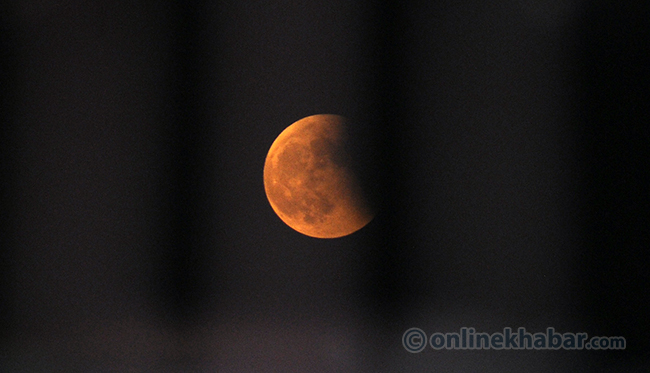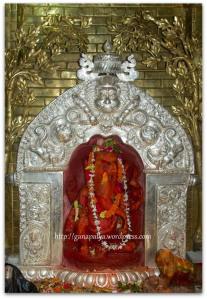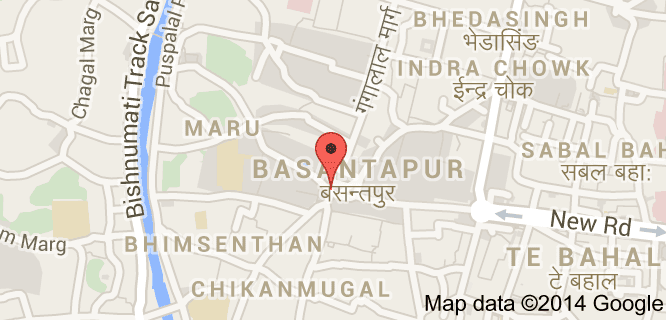पानी र बिजुलीको चरम अभाव बेहोरिरहेको काठमाडौंमा जान्ने हो भने घर–घरमै समाधान निकाल्न सकिन्छ।
बढ्दो माग, खराब व्यवस्थापन र भूमिगत स्रोतको अत्यधिक दोहनले काठमाडौंमा पानीको समस्या विकराल पारिरहेको छ। कामको सुस्तता हेर्दा बहुप्रतीक्षित मेलम्चीको पानी अझै एकाध वर्ष काठमाडौं आउने सम्भावना देखिंदैन।
न्यून लगानी र सानो प्रयासबाट घर–घरमै पानीको स्रोतको व्यवस्थापन गर्ने विकल्पमा भने काम भएको छैन। वातावरणविद् भूषण तुलाधर भन्छन्, “आकाशे पानी संकलन गर्ने प्रविधि जडान गरे काठमाडौंमा पानीको समस्या ह्वात्तै घट्छ।”
घरको छाना र छतमा पर्ने आकाशे पानी संकलन गर्दा खानेपानी मात्र होइन, सरसफाइका लागि समेत पानीको अभाव हुँदैन। आकाशे पानीलाई फिल्टरले छानेर ट्याङ्कीमा जम्मा गर्न मिल्छ।
रु.४०–५० हजारमा जडान गर्न सकिने यो प्रविधि शहरमा पानी आपूर्तिको उत्तम विकल्प भएको बताउँछन्, स्मार्ट पानीको ब्रान्डमा यस्तो काम गरिरहेको वान प्लानेट सोल्युसनका प्रबन्ध निर्देशक सुमन शाक्य। “यो प्रविधि काकाकुल बनिरहेको काठमाडौंका लागि सबैभन्दा भरपर्दो र दीर्घकालीन विकल्प हो”, शाक्य भन्छन्।
सबभन्दा माथि बालुवा, त्यसमुनि रोडा र पुछारमा अलि ठूला ढुंगाहरू राखेर पानी छानेर शुरूको फोहोर पानी अन्यत्रै व्यवस्थापन गरिने यो प्रविधिबाट बढी भएको पानी जमीनमा इन्जेक्ट गरिन्छ। अहिले जमीनबाट पानी थुत्ने मात्र काम भइरहेकाले जमीनमा पानी पस्न भने दिएको छैन, जसले गर्दा जमीनभित्र पानीको सतह घटिरहेको छ।
अस्थायी थपिने समेत गरी करीब ४० लाखको आवादी भएको काठमाडौंमा दैनिक न्यूनतम ४० करोड लीटर पानीको माग छ। आपूर्ति क्षमता भने हिउँदमा मुश्किलले ९ करोड लीटर र वर्षामा १४.४ करोड लीटर मात्र छ।
राजधानीमा खानेपानी व्यवस्थापनको जिम्मा पाएको काठमाडौं उपत्यका खानेपानी लिमिटेड (केयुकेएल) आपूर्ति र माग बीचको फराकिलो असन्तुलनको व्यवस्थापन गर्नमै ठिक्क छ। मेलम्चीको पानी आइहाले पनि काठमाडौंको माग र आपूर्तिको असन्तुलनमा भरथेग मात्र गर्छ, अभाव हटाउन सक्दैन। किनभने मेलम्चीको दैनिक आपूर्ति क्षमता १७ करोड लीटर मात्र हो।
काठमाडौंमा वार्षिक औसत १६०० मिलिमीटर पानी पर्छ। यो हिसाबले ३–४ आनामा बनेको घरको छतमा वार्षिक १ लाख ७० हजार लीटर पानी आउँछ।
त्यसको २० प्रतिशत फोहोर पानीको रूपमा घटाउँदा पनि करीब १ लाख २८ हजार लीटर पानी बचत हुन्छ, जुन चार जनाको परिवारलाई छेलोखेलो हुन्छ। पछिल्लो समय काठमाडौंमा बनेका घरमा पानीको अभावलाई ध्यान दिएर ठूला ट्याङ्की राख्ने गरेकोले आकाशे पानी संकलनका लागि झ्न् सहज देखिएको वातावरणकर्मी तुलाधर बताउँछन्।
काठमाडौंमा आकाशे पानी संकलन प्रविधि जडान गर्ने कम्पनीहरू पनि बढ्दो छन्। उनीहरू पानी समस्याको समाधान अन्यत्र नभई आकाश र आँगनमा भएको बताउँछन्। सरकारले पनि आकाशे पानी संकलन गर्ने प्रविधि जडान गर्ने गरी घरको नक्शा पास गर्न आउनेलाई शुल्कमा १० प्रतिशत छुटको व्यवस्था गरेको छ, तर यसको उति प्रचार–प्रसार भएको छैन।
घर बनाउनेहरू भने छतमा पर्ने पानी ढलमा पठाउने नाला बनाउन खर्च गरिरहेका छन्। त्यो पानी पनि ढलबाट चिप्लेर खोलाहुँदै समुद्रमा पुगिरहेको छ। यसले गर्दा जमीन रिचार्ज नभएर काठमाडौंका परम्परागत ढुङ्गेधारा र इनारहरू सुकिसकेका वनस्पति विज्ञ डा. तीर्थबहादुर श्रेष्ठ बताउँछन्।
अहिले काठमाडौंमा दैनिक ७ करोड लीटरभन्दा बढी पानी भूमिगत स्रोतबाट तानिने गरेको अनुमान छ। केयुकेएल, ठूला होटल, व्यापारिक कम्प्लेक्स, हाउजिङ, अपार्टमेन्ट र अन्य निजी व्यवसायीहरूको पानीको मुख्य स्रोत भूमिगत जल नै हो।
जथाभावी डिप बोरिङ गरेर पानी तान्ने प्रवृत्तिले भूमिगत पानीको भण्डार घटाएको मात्र छैन, जमीन नै भासिने खतरा देखिन थालेको छ। र्याूडिसन होटलले १५ वर्ष पुरानो डिप बोरिङ सुकेर केही महीनाअघि नयाँ बोरिङ गाड्दा पहिलाभन्दा २० मीटर तल पुग्नुपर्योी। यसले काठमाडौंमा भूमिगत पानीको सतह वर्षेनि एक मीटरभन्दा बढी घटिरहेको देखाउँछ।
भूमिगत जलस्रोत विकास समितिले काठमाडौंको बाँसबारीमा सन् १९८४ मा ४८.०८ मीटरमा पानी भेटाएकोमा २०१२ मा ८४.३४ मीटरसम्म बोरिङ पुर्याबउनु परेको थियो। त्यस्तै, धोबिघाटमा सन् २००० मा ७.६० मीटर गहिराइमा भेटिएको पानी २०१२ मा १४.२ मीटर तल पुगेको थियो।
भूमिगत पानीको अत्यधिक दोहन जारी राख्ने तर आकाशे पानीलाई जमीनमुनि छिर्न नदिने प्रवृत्तिले थप जोखिम निम्त्याइरहेको छ। वर्षेनि थपिने १० हजार हाराहारीका घर, सडक र अरू भौतिक संरचनाहरूको कारण काठमाडौंमा आकाशे पानी जमीनभित्र छिर्न नपाएर रिचार्ज ठप्प भएको छ। काठमाडौंबाट वार्षिक ६९.४४ मिलियन क्युबिक लीटर पानी झ्िकिइरहेको समितिको तथ्यांक छ।
 |
सौर्य वाटर पम्प
|
जापानी सहयोग नियोग (जाइका) ले दुई दशकअघि गरेको अध्ययनले काठमाडौंका बालाजु, लैनचौर, बूढानीलकण्ठ, गोंगबु, सुन्दरीजल र टोखामा बालुवा तथा मसिना ढुङ्गा रहेकाले सजिलै पानी छिर्ने संरचना रहेको निष्कर्ष निकालेको थियो। मध्य काठमाडौं र मध्य ललितपुरमा भने कमै पानी छिर्ने देखाएको थियो। पानी नछिर्ने तर बढी दोहन हुँदा मेक्सिको सिटी लगायतका शहर भासिएका थिए। वातावरणविद् तुलाधर काठमाडौंका पानी रिचार्ज हुने क्षेत्रहरूमा कंक्रिटको जालोले सतह बुच्याइदिएको बताउँछन्।
भूमिगत जलस्रोत विकास समितिका सिनियर डिभिजनल हाइड्रोलोजिस्ट सुरेन्द्रराज श्रेष्ठ काठमाडौंमा वर्षेनि थपिने सरदर १० हजार घरका कारण ३ हजार रोपनी जमीन सिल भएर पानी छिर्न नपाउँदा आगामी ३५ वर्षमा एक थोपो पानी जमीनभित्र नपुग्ने बताउँछन्। काठमाडौंका करीब ७०० डिप बोरिङ राखेर पानी चलाउने होटल, अपार्टमेन्ट, उद्योग, पानी व्यवसायीले दिनानुदिन जोखिम थपिइरहे पनि कसैले रिचार्जको उपाय अपनाएका छैनन्।
पानीको बढ्दो अभाव पूर्तिका लागि न्यून पानी प्रयोग तथा पानी व्यवस्थापनको आवश्यकता खट्केको छ। कपडा धोएको, नुहाएको पानीले ट्वाइलेट फ्लस चलाउन, तरकारी बारी, कौसी खेतीमा हाल्न सकिन्छ।
यस्तो पानीलाई सामान्य प्रविधिबाट छानेर पुनः प्रयोग गर्न सकिने तुलाधर बताउँछन्। कृषि विज्ञ मदन राईले आफ्नो र छिमेकको घरमा प्रयोग भइसकेको पानीबाट करेसाबारीलाई हरिलो–भरिलो पारेका छन्। वनस्पतिविज्ञ तीर्थबहादुर श्रेष्ठ वातावरणमा निरन्तर चल्ने प्रयोग र पुनः प्रयोगको चक्रलाई बिगार्न नहुने बताउँछन्।
शहरमा घर बनाउँदा नै वर्षाको पानी संकलन गर्ने प्रविधि जडान गर्न अनिवार्य बनाउन सके पानीको समस्या कम हुने मात्र होइन, भूमिगत दोहन समेत कम हुन्छ। भारतको तमिलनाडु, दिल्ली लगायतका शहरमा यो अनिवार्य छ। महानगरपालिकाले घर–घरमा यस्तो प्रविधि जडान गर्नेलाई राजस्वमा १० प्रतिशत छूट दिने घोषणा गरे पनि सर्वसाधारणमा विस्तार हुन पाएको छैन।
हरित ऊर्जा
माग अनुसारको आपूर्ति हुन नसकेपछि पछिल्ला ७ वर्षदेखि दैनिक जीवनसँग नमीठो गरी गाँसिएको लोडसेडिङको विकल्प सोलार वातावरणीय दृष्टिले पनि उत्तम हो। टीभी हेर्न, कम्प्युटर चलाउन र मोबाइल चार्ज गर्न मात्र होइन, पढ्न–लेख्न समेत नपाइने भएपछि अँध्यारोबाट त्राण खोज्नेका लागि सोलार सबभन्दा भरपर्दो र दीर्घकालीन उपाय हो।
वर्षको ३०० दिन औसत १०–१२ घन्टा घाम लाग्ने नेपाल सौर्य ऊर्जा उत्पादनका दृष्टिले संसारमै उच्च सम्भावनायुक्त मुलुक हो।
सोलारबाट घाम लागेको दिउँसो विना ब्याट्री चार्ज कार्यालय सञ्चालन गर्न पुग्ने विद्युत् उत्पादन हुन्छ। साँझ् र राति ‘ब्याकअप’ बाट ब्याट्रीमा चार्ज हुन्छ। विद्युत् प्राधिकरणका उपभोक्तामध्ये ९५ प्रतिशत घरेलु उपभोक्ता भएकाले उनीहरूलाई चाहिने बिजुलीको आवश्यकता सौर्य विद्युत्ले पूरा गर्न सक्छ।
६०–७० हजार खर्च गर्दा ६–७ वटा बत्ती बाल्न, मोबाइल चार्ज गर्न र टेलिभिजन चलाउन पुग्छ भने, ल्यापटप वा कम्प्युटर चलाउन वा अन्य कामका लागि रु.१ लाखको हाराहारीमा लगानी गर्नुपर्छ। सोलार होम सिस्टम जडान गरे केही वर्षमै लगानी उठ्ने बताउँछन् सन रे इनर्जीका प्रबन्ध निर्देशक राजेन्द्रबहादुर कार्की। उनी भन्छन्, “सोलार भनेको हजुरबाले लगानी गरेर नातिपुस्तासम्मले न्यून खर्चमा चलाउन मिल्ने प्रविधि हो।”
नवीकरणीय ऊर्जाको गतिलो स्रोत सौर्य ऊर्जा नेपालका लागि वातावरण सुहाउँदो मात्र हैन, आवश्यकता नै बनेको छ। दीर्घकालीन व्यवस्थापन र आर्थिक लाभ दुवै दृष्टिले उपयुक्त यो प्रविधिबारे जनचेतना जगाउन आवश्यक छ। सोलार सिस्टमबाट अति कम लागतमा सडक र बगैंचा समेत उज्यालो पार्न सकिन्छ।
काठमाडौंको दरबारमार्ग, बुटवल लगायतका शहरमा सोलार सिस्टमबाट स्ट्रिट लाइट राख्ने अभ्यास सफल भइसकेको छ। सोलार सोलुसन्सका प्रबन्ध निर्देशक राजकुमार थापा लोडसेडिङको कारण मात्र होइन, दीर्घकालीन विकल्पका लागि पनि सौर्य प्रणाली जडान गर्न सुझाव दिन्छन्।
सोलार प्यानलबाट पानी तताउने प्रविधि लोकप्रिय हुने क्रममा छ। यो प्रविधि न्यूनतम रु.३० हजारमा जडान गर्न सकिन्छ। यसले पानी तताउन ग्याँस गिजर वा अन्य ऊर्जाको खर्चलाई रोक्दैन मात्रै दीर्घकालीन सहज व्यवस्थापन पनि गरिदिन्छ।
नीति आवश्यक
शहरी क्षेत्रमा बन्ने घरको नक्शा पास गर्दा नै सौर्य विद्युत् जडान गर्नुपर्ने नियम अनिवार्य बनाउन सके धेरै हदसम्म लोडसेडिङ घटाउन सकिन्छ। सोलार सोल्युसन्सका प्रबन्ध निर्देशक राजकुमार थापा सरकारले नीति मात्रै बनाए शहरी क्षेत्रका घर–घरमा सोलार जडान गरेर राष्ट्रिय ग्रीडको विद्युत् नचाहिने बनाउन सकिने बताउँछन्।
सोलार राख्ने घरलाई सजिलो अनुदानको नीति ल्याउन सके प्रयोगकर्ता ह्वात्तै बढ्ने उनको अनुमान छ। सर्वसाधारणमा जानकारीको पनि अभाव रहेको औंल्याउँदै उनी भन्छन्, “नत्र, रु.२ करोडको घर बनाएर ५० लाखको गाडीमा हिंड्नेहरू रु.२ लाखको सोलार जडान नगरेर अँध्यारोमा बस्ने थिएनन्।”
सरकारले नीति बनाउने हो भने घर–घरमा उत्पादित सोलार दिउँसोको समयमा राष्ट्रिय ग्रीडमा बेच्न र राति ग्रीडको विद्युत् किन्न मिल्ने ‘नेट मिटरिङ’ प्रविधि समेत सम्भव छ। यसमा उपभोक्ताले आफ्नो घरबाट बिक्री भएको सोलार ऊर्जाको रकम पाउँछन् भने खरीद गर्दाको विद्युत्को तिर्नुपर्छ। तर, यसका लागि राष्ट्रिय प्रणालीमा रहेको करीब २८ प्रतिशत चुहावट र लोडसेडिङ हट्नुपर्छ।
अहिले, केयूकेएलले ललितपुरको सुन्दरीघाटमा ६५० किलोवाटको सोलार प्रणालीबाट पानी तान्नुको साथै आफूलाई नचाहिएको वेलाको बिजुली ग्रीडमा जोडेर विद्युत् प्राधिकरणलाई प्रति युनिट रु.५.१२ मा बिक्री गरिरहेको छ। पुल्चोक इन्जिनियरिङ क्याम्पस अन्तर्गतको ऊर्जा अध्ययन केन्द्रले पनि केन्द्र परिसरबाट एक किलोवाट र मीनभवनस्थित प्राधिकरण कार्यालयबाट तीन वाटको सौर्य ऊर्जा राष्ट्रिय ग्रीडमा जडान गर्ने सफलता हासिल गरेको छ।
________________________________________
घामबाट पानी

पिउने, अन्य घरायसी काममा प्रयोग गरिने र सिंचाइका लागि चाहिने पानीको अभाव पूरा गर्न गत साता इसिमोडले खुमलटारमा परीक्षण गरेको हाते सोलार पानी पम्प अस्त्र बन्न सक्ने देखिन्छ।
१ हर्जपावर (७५० वाट) को १२ सोलार प्यानल भएको सोलार पम्प वा खुट्टाले पनि चलाउन सकिने २४ प्यानलको २ हर्जपावरको रु.१ लाख ६० हजार पर्ने यो सोलारले नदी, कुवा र इनारको पानी ५० फिट माथिसम्म तान्न सक्छ। भारतको पुनेस्थित अटम सोलार कम्पनीले डिजाइन गरेको यो सोलार पानी पम्पले सन् २०१३ को ग्रीन पीस प्रतिस्पर्धामा उत्कृष्ट डिजाइनको पुरस्कार पाएको थियो।
इसिमोडका प्रमुख डेभिड मोल्डनले नेपालको हिमाली भेगमा पनि यो प्रविधि उपयोगी हुने आशा व्यक्त गरे।
________________________________________
शून्य कार्बन अभियान

पाटनढोकास्थित हिमाल मिडियाको कार्यालयका ३० जना पत्रकार र प्रशासनका २० जना कर्मचारीले साप्ताहिक हिमाल खबरपत्रिका र नेपाली टाइम्स का लागि ६० वटा कम्प्युटर, प्रिन्टर्स, स्क्यानर्स, फ्यान, फोटोकपी मेशीन र ६० वटा सीएफएल बत्ती प्रयोग गर्छन्। त्यसका लागि १० केभीको जेनेरेटर चलाउँदा डिजलमा मासिक रु.५५ हजार खर्च हुन्थ्यो।
खर्च कम हुने र कार्बन उत्सर्जन पनि नहुने उपायका रूपमा भर्खरै हिमाल मिडियाले आफ्नै छतमा ६ किलोवाटको इलेक्ट्रो मोटिभ राखेर ब्याट्री विना सोलार प्यानलबाट सबै काम गर्न थालेको छ।
हिमाल मिडियाका प्रबन्धक कर्म लामा भन्छन्, “हामीले इन्धनमा हुने खर्च बचत गर्दै वायु प्रदूषण घटाएर हाम्रो प्रकाशनलाई वातावरणमैत्री पनि बनाएका छौं।”





















































